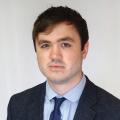
A FORMER director of Culham’s nuclear fusion laboratory has died aged 87.
Dr Don Sweetman, who passed away just before Christmas, was a widely respected figure among the UK and international community of researchers developing fusion as a future energy source.
He joined the team at Culham in 1962 and was instrumental in the laboratory’s success over more than three decades.
In his time as Culham director in the 1990s, he sustained a vibrant UK fusion programme in a difficult financial climate.
Dr Sweetman started work with the UK Atomic Energy Authority (UKAEA) at Aldermaston in Berkshire in 1955.
Two years later he went to the United States as a Commonwealth Research Fellow at the Massachusetts Institute of Technology.
On his return to Aldermaston in 1958 he joined the rapidly-developing fusion research activity there and led the team building the Phoenix mirror machine – a type of magnetic chamber that was an early concept for fusion devices.
In 1962 he moved with members of his Phoenix team to Culham, just after the laboratory had been established, to build an upgrade to Phoenix – ‘Phoenix II’.
With a stint at Princeton Plasma Physics Laboratory in the USA under his belt, Dr Sweetman returned to Culham in 1971.
He was responsible for many of the laboratory’s key experiments during the 1970s as it adopted the tokamak reactor design that is today regarded as the best route to fusion energy.
In 1981 he became head of the experimental division at Culham before taking over as UKAEA’s Programme Director for Fusion and then Director of UKAEA Fusion, remaining in that role until his retirement in 1996.
During his time as director, Dr Sweetman sustained a vibrant research programme in the face of substantial funding cuts to the UK’s nuclear fusion budget.
He laid foundations for research that continues at Culham today.
Despite the difficult financial climate, he managed to find funds for the innovative START device in the 1980s, a world first which rapidly proved the promise of the ‘spherical tokamak’ – a smaller, more potentially efficient design.
Subsequently, in the early 1990s he was a key figure in getting government and European approval for the construction of the larger spherical tokamak experiment MAST (Mega Amp Spherical Tokamak), whose successor MAST Upgrade will go into operation at Culham later this year.
Dr Sweetman’s funeral was held in January.
He is survived by his wife Betty and one daughter, Amanda.



Comments: Our rules
We want our comments to be a lively and valuable part of our community - a place where readers can debate and engage with the most important local issues. The ability to comment on our stories is a privilege, not a right, however, and that privilege may be withdrawn if it is abused or misused.
Please report any comments that break our rules.
Read the rules here